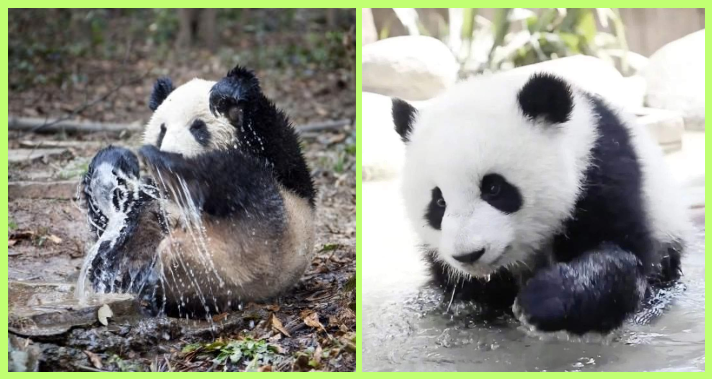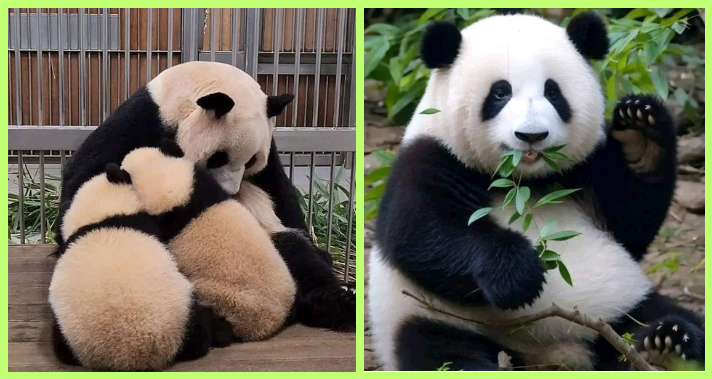The giant panda is one of the most easily recognized animals on earth. Its black and white fur make it stand out and give it a specific identity. But these colors are not only for good looks. There is actual science as to why pandas are black and white. Every part of their body is colored for a reason. These colors allow them to survive, communicate and live in their natural habitat. Panda fur is thick and soft to insulate them from the cold in their mountain habitat. But the most interesting aspect is the black and white colors. This color pattern is by no means random. It has been shaped by nature over time to serve the purpose of helping pandas to adapt to their environment. This blog discusses the meaning of panda colors, their purpose, and importance in the simplest way.
Science Behind Panda Colors
One of the important reasons for the panda colors is blending into their habitats. Panda is lived in forest and snowy mountain area. The white fur helps them to blend in with the snow during winter. Their dark fur blends into the black of the trees, shadows and rocks of the forest. Even though panda is a huge animal, this color combination helps them to be less visible to the predator. Their combination of colors is a natural defense mechanism. And when they sit still their color is difficult to establish from a distance. The contrast of black and white can be considered heavy to humans, but in the wild, it is helpful to pandas to blend in with light and shadows. This is a natural cover that enables them to be safe and secure around them.
Pandas do not say or loudly roar to communicate. Instead, they use gestures, smell, and looks to communicate. Their black and white faces and in particular the dark fur around the eyes aid when it comes to communication. Their big eyes look bigger and even more expressive on account of the black patches around them. This allows other pandas to know their feelings or intentions. There is their black ears which can give warning or alert. When the panda feels disturbed, the black ears of the panda will stand up; the ears are one of the vital visual signals that will give specific indication to other pandas. The color pattern around their face is used in social communication. Even though the majority of the pandas are solitary in nature, they still need a way to identify each other or to send messages whenever required.
#1. Pandas also looks cute when they are sad

#2. Brown panda in bear dress looks cute
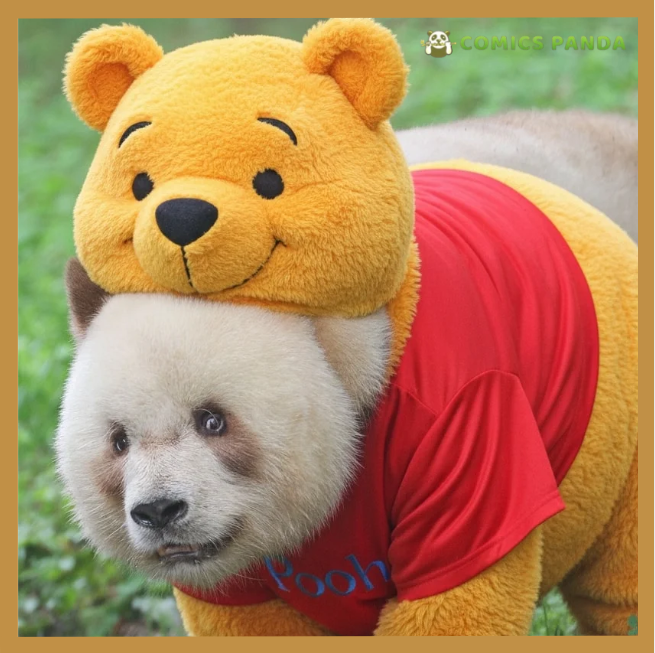
Another function of panda’s color is protection from sun rays. The black color of their body, particularly around the shoulders and legs, could be used to absorb heat and thereby shield the skin from the sun. On the other hand, when the temperature is high, the white fur reflects the sun’s rays and keeps their body cool. This balance is to help the pandas survive in the places where the temperature is changing between the seasons. Their dense coat is also oil laden and thus protects their skin from cold winds. The combination of light and dark colors ensures that their body temperature naturally regulates. It is nature’s way of providing them a warm coat, which acts as an inbuilt garment.
#3. After a rainy day, it’s time to go out

#4. Baby panda find it difficult to search fresh bamboos
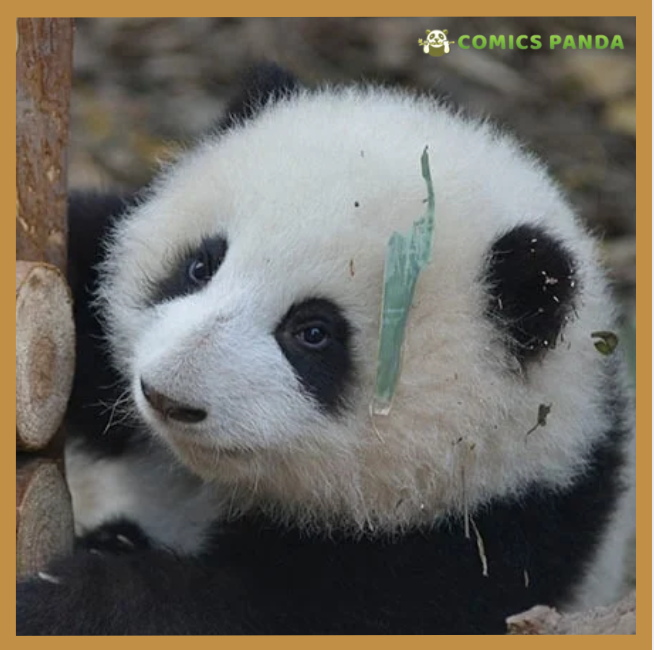
Even though pandas are lethargic creatures, they can attack if they are threatened. Their shoulders and legs are black and make them appear stronger and more powerful. The contrast of black and white makes their body seem larger and more serious to other animals. Their black circles around their eyes are also meant to make their eyes look more intense. This is to send a silent message to other animals around them. Pandas use their appearance to avoid conflict instead of fighting. Their colors might serve as silent menace to alert other people to keep away.
#5. What an adorable baby

#6. Panda loves to enjoy in winter season

Panda colours also can help the baby pandas learn and recognize their mothers. The black and white pattern also helps the cubs to see the shape of their mothers and stay close to each other for protection. Cubs are completely reliant upon their mothers during the first months after birth. So identifying the color pattern of the mother keeps them safe and protected. This color pattern also induces familiarity among the panda. Even though they are solitary, they are still cognizant of what other individuals look like and this is of use in times such as mating or when marking territory. Pandas have black and white fur as a result of thousands of years of evolution. Their ancestors did not always look this way. As pandas lost the bulk of their teeth, foraging techniques changed and bodies adapted to change for a new diet. Their colors were also adapted to their forest and mountain life.
#7. It’s very rare to see the baby panda in diaper

#8. Pandas love to relax in the sunny day
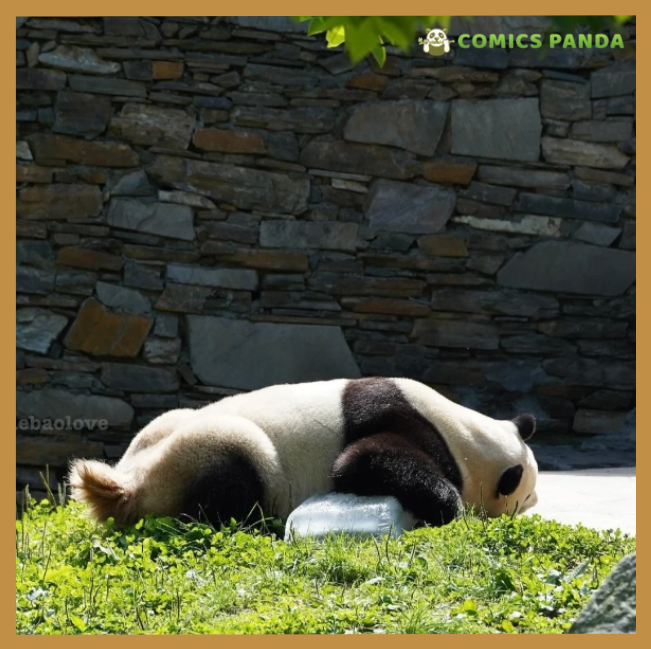
It is just that the best survival characteristics won out. The color of the panda helped them survive in the cold forests, avoid danger, and communicate without making sounds. These characteristics were passed on from generation to generation until they became a permanent part of the species. Most animals have an overarching color. But the pandas are special as they are black and white. This simple juxtaposition makes them lovely and unforgettable. But besides being beautiful, these colours act as a natural tool. The white fur assists them with blending in with the snow. The black fur blends in with trees and shadows. The colors are also used for temperature control, communication and protection. Their hair is thick, oily, and double-layered. So, it is not only a beauty enhancer. It keeps them safe from the cold, rain and harsh climates. The reason behind every section of their fur, both its colour and its texture, is practical.
#9. He tries his best to hide but fail
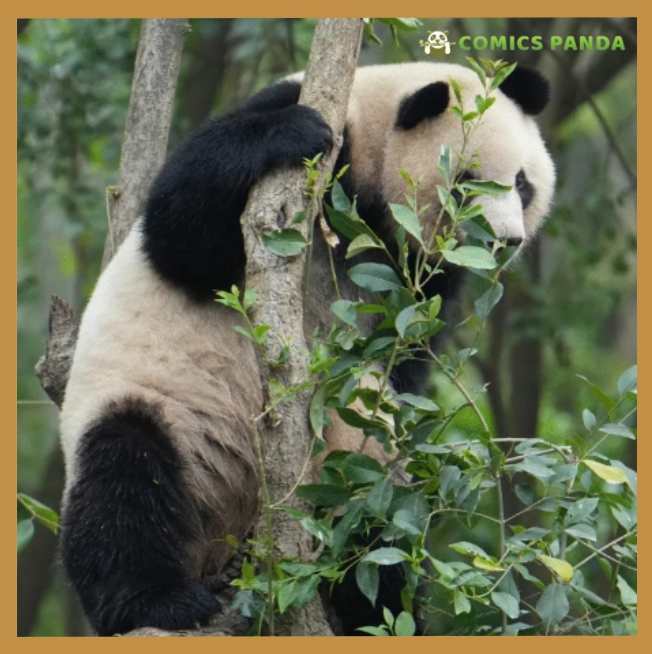
#10. How do I look?

The panda is an example of how nature achieves harmony in its design. Their black and white fur is not random. It is a product of survival, intelligence and adaptation. From eyes to legs, they have a purpose for all their colours. These colors help pandas to fit into their home and be safe and live in peace. Their appearance is simple yet complex at the same time. It demonstrates how nature uses color for beauty and most importantly to ensure survival. Their colors and what they teach us about animals reveals how deeply rooted animals are to their environment. The black and white coloring of the panda is more than just an adorable condition. They are meaningful, purposeful and historic. These colours help panda to blend in, communicate, defend themselves, and live in harmony with nature. They are the result of the intelligence of evolution and the creativity of nature. If you found this blog interesting, then please feel free to share it with other people and visit our website for more awesome articles about wildlife and nature.


